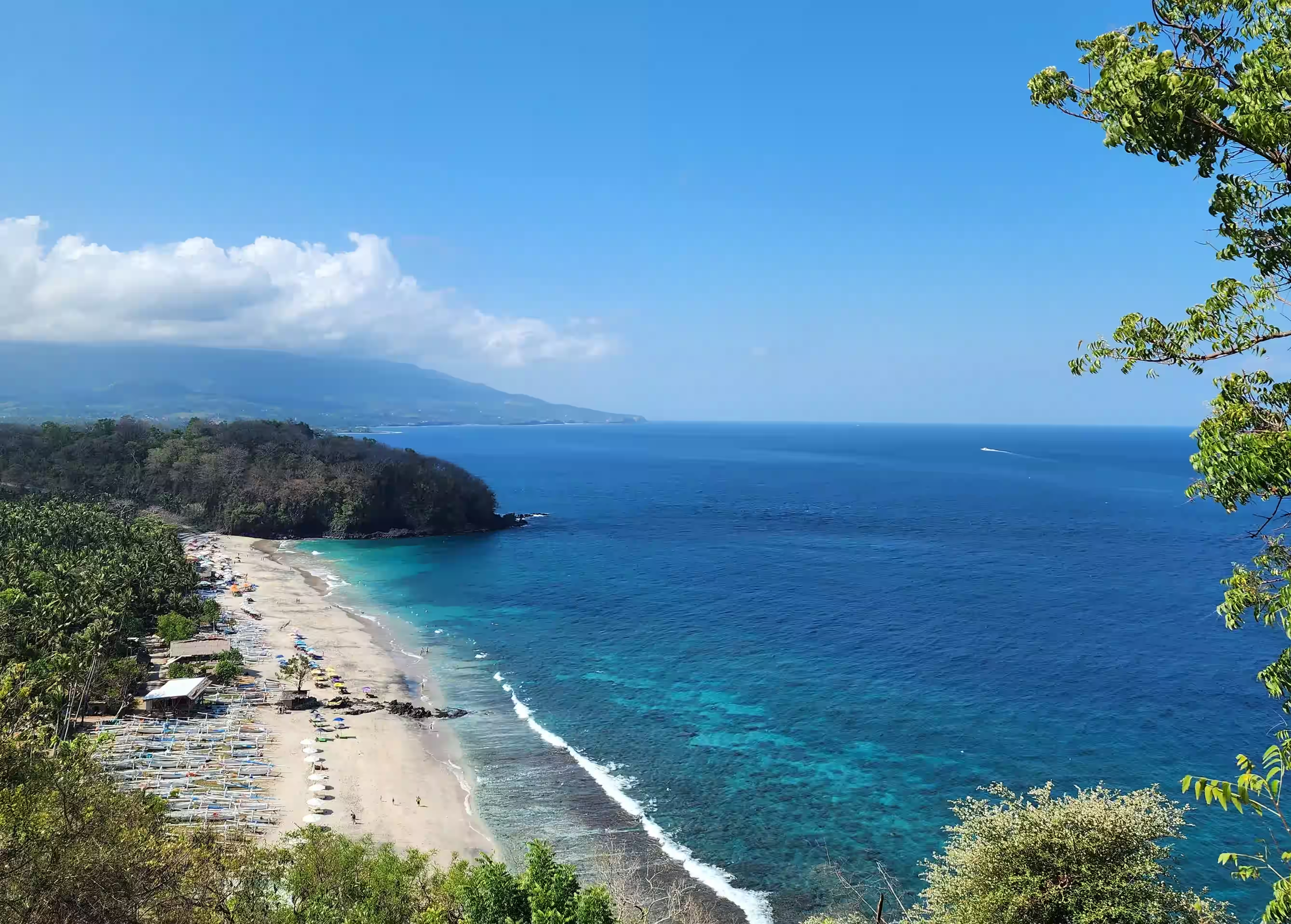Best Time to Dive in Bali: What You Need to Know

Bali’s Climate and Diving Seasons
In my opinion, one of the best things about diving in Bali is how consistent the weather feels year-round. The island sits right in the tropics, near the Equator, so you get that warm, humid climate almost all the time. Daytime temperatures usually hover between 29 and 31 degrees, and at night, it cools off just enough to be comfortable, around 23. That said, the year does split into two clear seasons. You’ve got the rainy season from November to April, and the dry season from May to October (Source). Each one has its own vibe, especially when it comes to diving.
Bali has two seasons. There is the rainy season from November to April and the dry season from May to October. I think you can dive in Bali any time of the year, but the underwater conditions definitely change with the seasons.
Dry Season: Best Time to Go Diving
The dry season is what most people go for. It usually means clearer skies, less rain, calmer seas, and much better visibility. In my view, that is when Bali really shows off its best underwater conditions. Some people say that April and October are the absolute best months to dive. These are the transition periods between the two seasons, so the water is usually calm and the winds are light. I think they are a great choice if you want good conditions without big crowds. Other sources describe the entire period from May to November as the best season, especially May to September when visibility can reach up to 40 metres. That sounds like a solid time to plan your dives if you are aiming for ideal visibility and comfortable weather.
Rainy Season Diving: Worth Considering
Rainy season diving is not off the table. Rain might only fall at night or for a short time during the day. Visibility might drop to around 10 meters, but the upside is fewer tourists and better deals on places to stay. Some dive spots are actually great in rainy season. Menjangan Island is a good example. Amed and Tulamben are also protected and stay clear enough for decent diving. One diver noted that March had more runoff, which affected visibility a bit more.
Spotting the Stars: Mola-Mola and Manta Rays
If seeing specific marine creatures is a priority for your dive trip, timing is certainly important, as the presence of certain animals can be seasonal. Based on this article, here is the best time to see Mola-Mola and Manta Rays:
Mola-Mola (Oceanic Sunfish)
You will find these strange and wonderful fish mostly from July to October. Some divers have seen them into November too. To boost your odds, avoid the early and late parts of that range. For a first trip focused on seeing mola-mola in Nusa Penida, September is often recommended. These fish normally hang out deep, but during Bali’s cooler months, nutrient-rich water rises and brings them closer to the surface. Crystal Bay is the go-to spot. One diver said mid-October was already a little late, though they still caught a glimpse.
Manta Rays
These graceful creatures are easier to spot. One source says April and May are best. But another diver who went in mid-October called Manta Point a “manta ray highway” and said sightings were almost guaranteed. So it looks like there is a good chance of spotting them across multiple months.
Avoiding Crowds: Smart Travel Timing
Bali is a popular tourist destination20, and its famous dive sites, especially those around Nusa Penida like Manta Point and Crystal Bay, can become quite crowded18. During peak season, it’s not uncommon to see over 30 boats18, with potentially 70-100 divers in the water simultaneously at these popular spots18. If you prefer a quieter diving experience, you’ll want to bypass the main peak tourist periods:
- July and August
- Easter holidays
- Christmas and New Year
- Chinese New Year
- Golden Week in late April and early May
For a quieter experience with great conditions, consider going in May or June. November is also a smart pick once the tourist rush has passed. Just be ready for some of the famous sites like Manta Point and Crystal Bay to get packed during high season, both with boats and other divers.
Water Temperatures and What to Wear
Let’s talk about water temperature. It stays fairly warm, around 27 degrees in July and up to 30 in January at the surface. But some places like Crystal Bay can be much cooler deeper down. You might get 23 to 25 degrees once you hit depth, especially around Nusa Penida and Lembongan. Menjangan is one of the warmer areas overall. A 3mm wetsuit is usually enough, but for colder sites, you might want to bring a 5mm (Source).
Final Thoughts: Picking the Perfect Dive Window
To summarise, while Bali offers diving opportunities year-round, the dry season from May to October generally provides the best overall conditions with less rain and better visibility. The transition months of April and October might offer particularly calm seas. If you’re hoping to see Mola-Mola, target the season from July to November, with September potentially being the best bet for Nusa Penida. Manta Rays might be best seen in April, May, or even mid-October based on different accounts.
For excellent diving without the biggest crowds, aim for May to June or November. Regardless of when you go, Bali offers incredible biodiversity, unique underwater landscapes, and a wide range of diving experiences like muck and wreck diving that are suitable for all levels.
Happy planning, and we hope you have an incredible time exploring the underwater wonders of Bali!